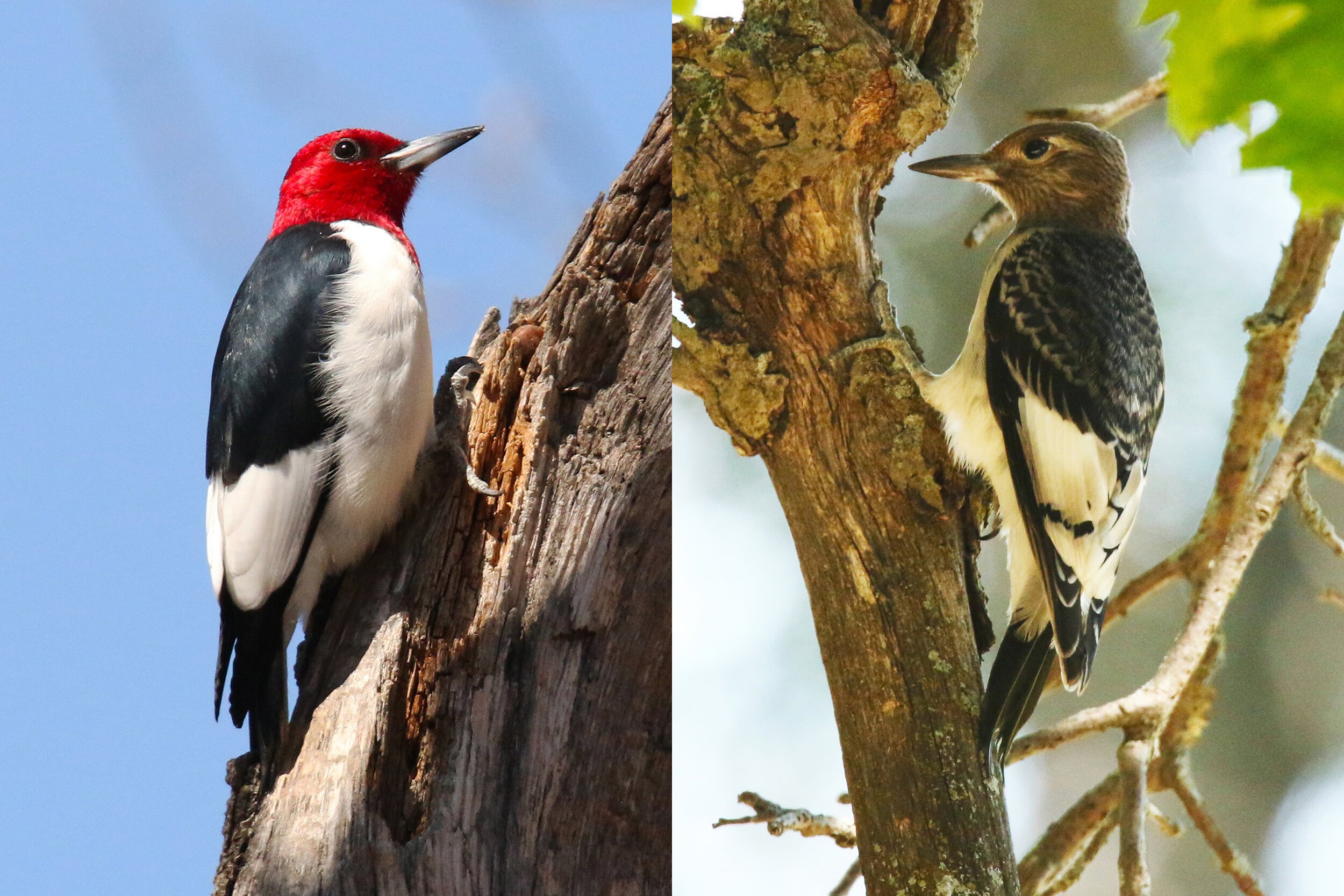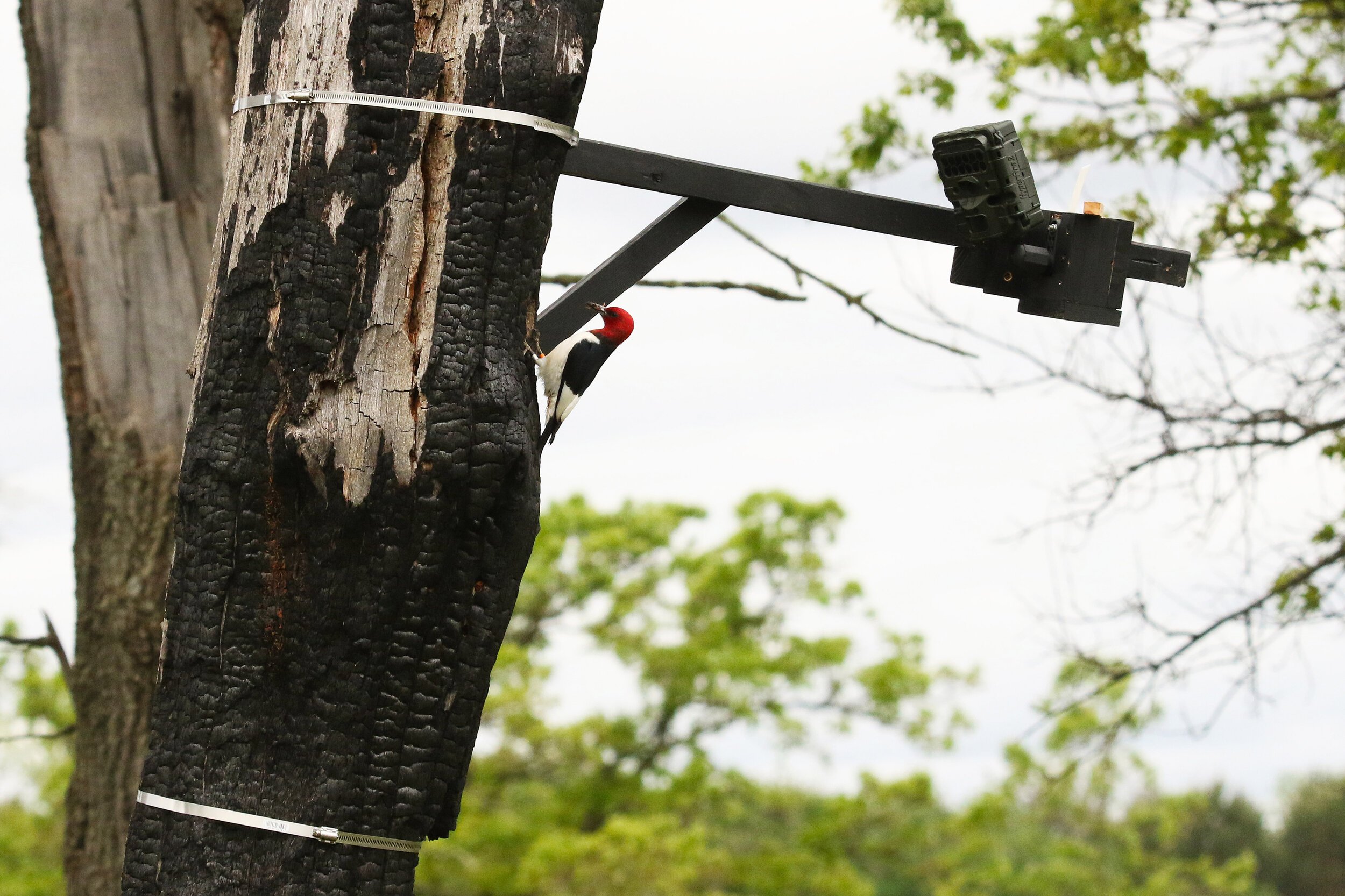Red-headed Woodpecker Research Update—Fall 2020
Red-headed Woodpecker in nest cavity. Photos courtesy Siah St. Clair
The 2020 Red-headed Woodpecker (RHWO) field season at the Cedar Creek Ecosystem Science Reserve came to a close in September. Dr. Elena West and her team spent the final weeks of their field season collecting data on nest tree density, or tree hardness. Until fairly recently, methods for quantifying wood density have lagged behind methods for measuring external tree- and habitat-level features in order to determine the factors that influence nest site selection by woodpeckers. Past studies have largely used visual indications of wood decay, such as the presence of fungal conks to classify stages of tree decay. However, visual markers can be problematic because nest trees used by woodpeckers do not always show fungal conks, even when wood decay fungi are present. Research has also shown that tree decay classes do not always correlate with wood density.
Woodpeckers and other cavity nesters appear to use a variety of decay classes, ranging from entirely live trees with no fungus or defects, to trees in advanced stages of decay, indicating that these types of visual markers are fairly unreliable indicators of nest site availability. The results from this study will help researchers understand the role of wood hardness in nest site selection and in limiting nesting opportunities. Ultimately, this information will be used to guide land managers and private land owners working on Red-headed Woodpecker habitat restoration efforts.
Kirsti Carr (left) and April Strzelczyk measuring tree hardness.
Taking detailed measurements.
To measure the hardness of trees researchers drill a small hole directly above or below a nest cavity. An increment borer is then threaded into the drilled hole, and a torque wrench is used to turn the borer into the hole at one centimeter intervals. The torque required to turn the increment borer at each interval is recorded. Researchers also collected detailed measurements from each cavity, including dimensions of the entrance hole and depth inside, and recorded information on tree species, the amount of bark present and tree diameter.
Adult and fledgling RHWO.
As of early October the majority of the RHWOs at Cedar Creek had dispersed or migrated to other locations. This is the first year in the four years of this study that most of the RHWOs have left Cedar Creek for the winter. This is a happy event for the research team because it means that the 24 RHWOs that had GPS tracking devices placed on them earlier this summer may record where they have traveled during the fall and winter. At least some of these birds should return to Cedar Creek next spring and be recaptured to have the tracking devices removed and the data downloaded. Learning where RHWOs go when they leave for a winter is a primary research goal.
RHWO with nest camera.
Nest camera captures a RHWO nesting in this cavity.
Nest camera records a White-breasted Nuthatch investigating the same cavity.
A Great-crested Flycatcher is also interested.
Nine nest cameras will continue to take videos of RHWO nest cavities during the fall, winter and spring. Researchers placed these cameras during the summer of 2020 and are working to develop a project accessible to the public so that community scientists can help classify the behaviors captured in these videos. Researchers hope that the cameras will record additional information on the presence and activities of other animal species that use RHWO nest cavities throughout the year.
Siah St. Clair, Audubon Chapter of Minneapolis, and Dr. Elena West, RHWO lead researcher








